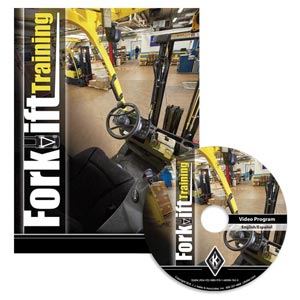This training program is available in multiple formats. View all formats.
Hazmat Training Program - USB and Digital Download
Need training materials today?
No problem! The Hazmat Training Program is available instantly in a digital download format! When you purchase the digital download, you'll get access to all the same content as the USB program (excluding the Employee Packet and Employee Workbook) in seconds! See below for details.
Best value > SAVE 25% when you purchase both the USB + Digital Download format!
Best Selling DVD Programs
Overview
Hazardous materials (hazmat) can be a risk to health, safety, and property when shipped. The Department of Transportation (DOT) decides what items are considered hazmat. Four examples of hazmat are gasoline, oxygen, propane, and fireworks.
The Hazardous Materials Regulations (HMR) are a set of rules created by The Pipeline and Hazardous Materials Safety Administration (PHMSA). Hazmat workers need to follow the rules to make sure all hazmat is packed and handled safely during shipping. The rules help communicate the possible hazards of any material being shipped to everyone involved. This includes motor carriers, hazmat workers, and emergency crews.
The HMRs require every hazmat employer to train, test, and certify every hazmat employee within 90 days of employment, within 90 days of any change in job function, and every three years as a refresher in four areas: general awareness/familiarization training, safety training, security awareness training, and function-specific training. In addition, drivers who transport hazmat are also required to take modal-specific training.
Please note: 49 CFR 172.704(d) of the HMR requires each hazmat employer to create and retain a record certifying the current training of each hazmat employee. It is the responsibility of the hazmat employer to complete additional company-specific training in order to formally certify each learner. Trainers may use the J. J. Keller-issued certificate for compliance with the recordkeeping requirements in Section 172.704(d)(3). The trainer and the trainer’s company are considered the “person providing the training” in Section 172.704(d)(4). Because of this, trainers should maintain additional records documenting a description or copy of the additional company-specific training materials provided to each learner.
- Regulations Covered: 49 CFR Parts 107-180 and 49 CFR Part 397
- Intended Audience: All hazmat employees, in all industries, who are responsible for any aspect of shipping or transporting hazardous materials
- Languages: English and Spanish
How to Purchase and Access Digital Download Program
- Select "Digital Download" from the "Format" drop down menu above
- Click "Add to Cart"
- Click "Proceed to Cart"
- Follow the Checkout instructions
- After submitting your order, you will be provided with a link to download the content (the link is valid for 5 days)
- Click on the download link, and save the content to your computer
Digital Downloads subject to the J. J. Keller Training Terms of Use.
Specification
| Product Code | Description | Format | Language | UPC | Copyright Date | ISBN |
|---|---|---|---|---|---|---|
|
67896
|
USB
|
USB
|
English & Spanish
|
755547036202
|
2023
|
978-1-63780
|
|
71604
|
Digital Download
|
Digital Download
|
English & Spanish
|
|
2023
|
|
|
71603
|
USB + Download
|
USB + Digital Download
|
English & Spanish
|
|
2023
|
|






